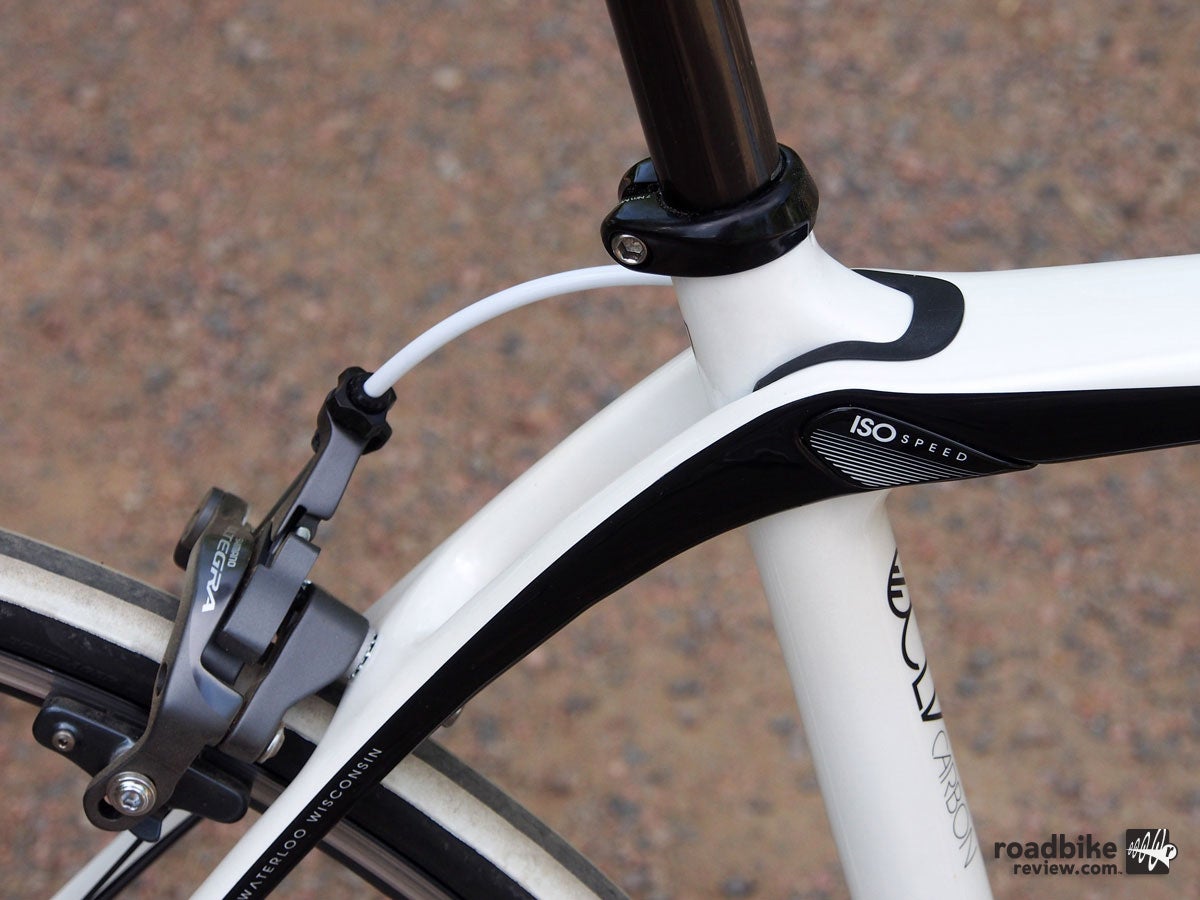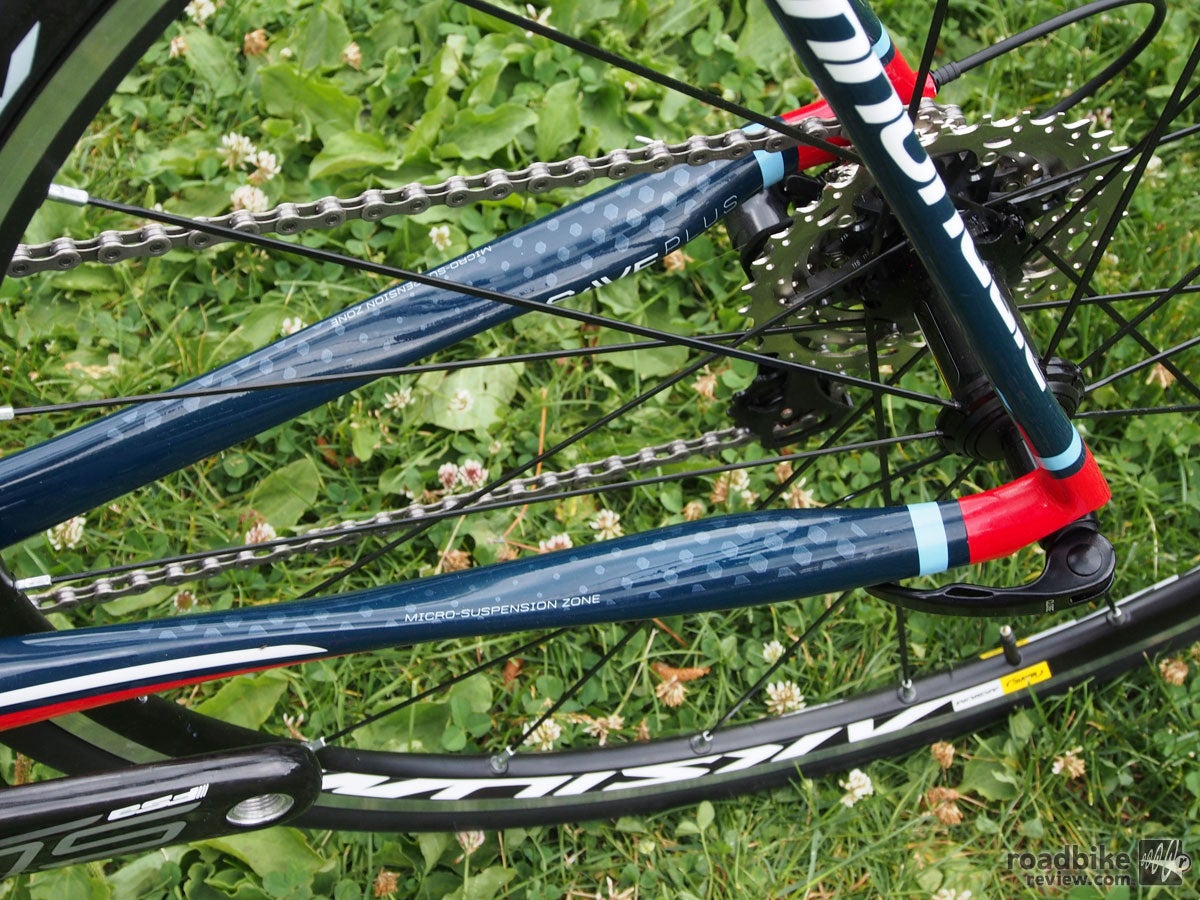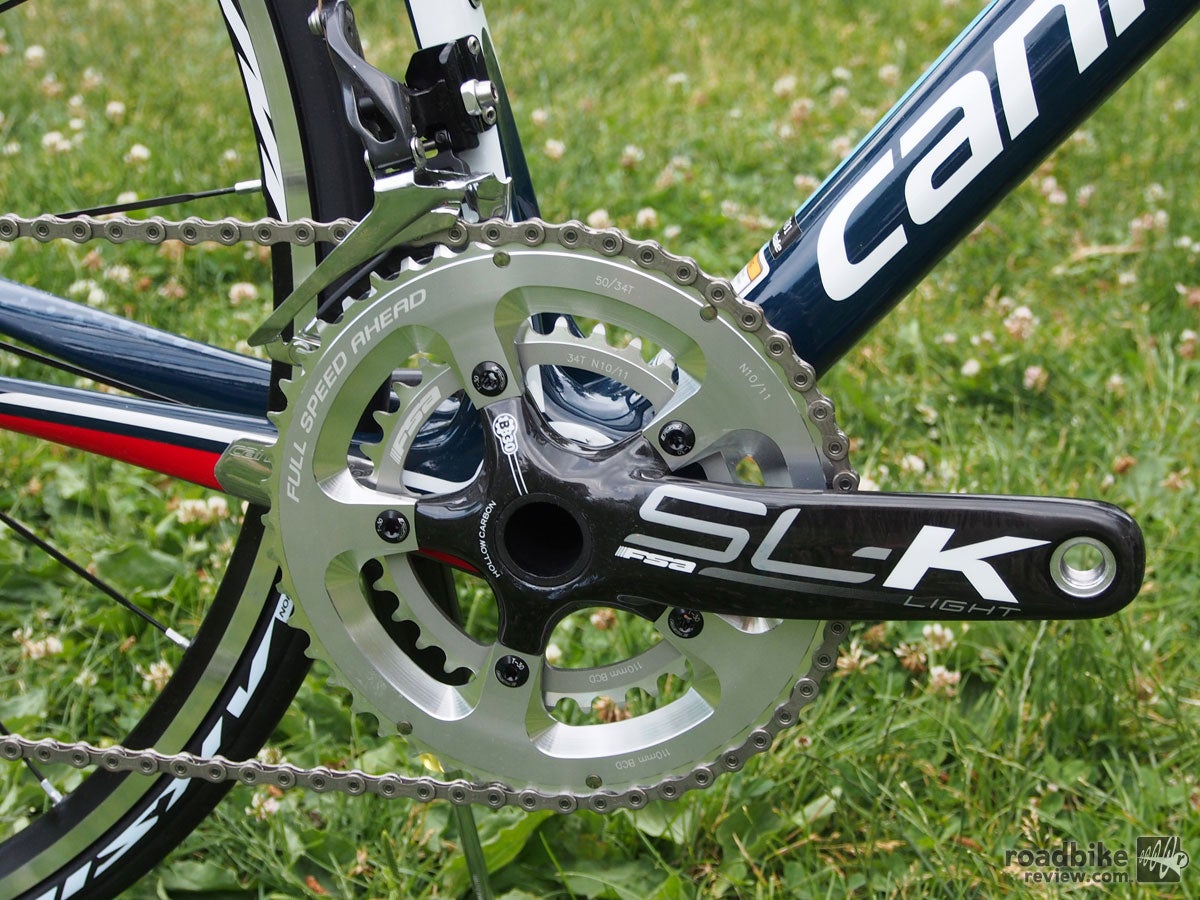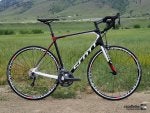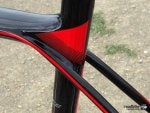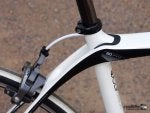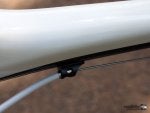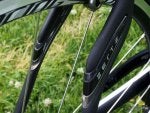
Rough road riding is a key component of the RoadBikeReview $3,000 Endurance Bike Shootout.
This article is part of RoadBikeReview's $3,000 Endurance Bike Shootout. Check back soon to see the rest of the reviews on our Shootout Round-Up Page.
Endurance. It's what we so often strive for each time we pedal a bike. The endurance to ride farther, pedal faster, climb quicker, and when done, recover so we can do it all over the next day.
In the bike industry, endurance has engendered its own definition. Endurance bikes are built to be both comfortable - and efficient and powerful. Or put another way, they are the bikes that best suit most of us most of the time. We want to head out for a long, pain free day in the saddle, but still feel efficient, smooth and fast. These aren't purebred race bikes, but that doesn't mean they can't be raced. These are road bikes, but that doesn't mean they can't be taken off road. These are bikes that can do a little bit of everything - and do it well.
This test will examine, compare and contrast seven endurance bikes, each produced by one of sport's major two-wheeled manufactures: Cannondale, Felt, Giant, Jamis, Scott, Specialized and Trek. And each of these bikes will have a price tag around $3,000. We choose this dollar amount because it is both a reasonable - but not overly extravagant - amount of money to pay for a road bike, and at this price point you still get access to near top-end technology. Frames are made of carbon fiber. Drivetrains are speckled with Shimano Ultegra components. Cable routing is typically internal. Weight is well under 20 pounds.
During our month-long test session, each bike will be driven through a rigorous test regimen that includes long rides and short rides, steep climbs and fast flats, smooth pavement and rough dirt roads. We'll weigh them. We'll evaluate component spec. And we'll talk to the manufacturers to find out why they did what they did when bringing these bikes to market.

Flats, climbing and of course descending prowess will be critical the testing regimen.
The RoadBikeReview test team is an eclectic mix of passionate cyclists. Among our crew is an accomplished Ironman triathlete, a WorldTour-level mechanic, several Cat. 1 racers, and a handful of weekend warriors and average Joe's who simply love riding bikes. Each tester will spend extended time aboard the fleet of test bikes, then deliver copious feedback about what they liked and what they loathed.
Our test tracks are the myriad cycling-friendly roads that ring the cycling Mecca that is Boulder, Colorado. We'll bang around the rough dirt roads of the famed Boulder Roubaix course north of town. We'll spin up the steep canyon climbs west or the city. And we'll traverse the rolling bucolic country lanes that connect the two. When done testing, we'll publish in-depth reviews of each bike, outlining the good and bad, and then rank the bikes against one another to help you make an informed buying decision. In the meantime, here's how the bikes stack up by weight and price.

Head over to page 2 of this post for a brief first look sketch of our seven test bikes, including key components and our first impressions.
Have you spent time on any of these bikes? Let us know your thoughts in the comments section below.

Cannondale Synapse Carbon 3
Price: $3,200
Weight (size 58cm): 17 pounds, 2 ounces
Front wheel weight (with skewer, tire and tube): 1,240 grams
Rear wheel (with cassette, skewer, tire and tube): 1,680 grams
Key components: Shimano Ultegra 6800 11-speed drivetrain except FSA SL-K 50-34 crankset. Mavic Aksion wheels paired with Mavic Aksion 25c tires. Bars and stem are Cannondale C2. Fizik Aliante saddle sits on top of Cannondale carbon seatpost. Internal cable routing.
Manufacturer's pitch: Crush meets plush. The perfect balance between raw power and all-day ridability, the Synapse combines light weight and dialed vertical compliance. S.E.R.G. (Synapse Endurance Race Geometry) means a slightly taller head tube, slightly longer wheelbase and slightly slacker head angle. S.E.R.G. strikes a balance between pure race positioning and upright comfort. Perfect for long days in the saddle and confident handling on all road surfaces. Save Plus micro-suspension system is a three part system, comprised of the carbon lay-up, the rear triangle and fork, and the seat post and seat tube, all designed to collaborate to reduce vibration, improve handling, and increase comfort. Scalloped seat tube and 25.4mm diameter seatpost are designed to flex together to provide more comfort when seated.
Initial impressions: Normally we're not big fans of broken drivetrains, but the Synapse Carbon 3 gets a carbon FSA SL-K crankset to go along with it's Shimano Ultegra 6800 drivetrain. That helps slice some weight. The Synapse is the lightest of our 58cm test bikes and only a shade heavier than the Giant, which measures 55.5cm. We're also pleased to see a set of brand name wheels, though we spotted a slight seam imperfection on the rims, which will likely cause some brake pulsing out on the road. The unique helixed shapes of the chainstays and seatstays, which are claimed to work in conjunction with the offset dropout fork to allow the wheels to track over imperfections in the road for better handling and control seated or standing, are certainly eye-catching -- as is the entire bike. But will it deliver on its lofty promises?
Read the Full Review Here
More info: www.cannondale.com

Felt Z3
Price: $3,000
Weight (size 58cm): 17 pounds, 8 ounces
Front wheel weight (with skewer, tire and tube): 1,240 grams
Rear wheel (with cassette, skewer, tire and tube): 1,800 grams
Key components: Shimano Ultegra 6800 11-speed drivetrain except FSA Energy Hollow Forged 50-34 crankset and FSA Energy brakes. Shimano RS 11 wheels paired with Vittoria Zaffiro Pro Slick 25c tires. Bars are Felt Variable Shape Super Light. Stem is Felt Variable Angle. Prologo Scratch Pro saddle sits on top of Felt Performance UHC seatpost. Internal cable routing.
Manufacturer's pitch: Saving money doesn't mean having to sacrifice performance, says Felt. The Z3 uses endurance road UHC Performance MMC carbon fiber to create a frame that's responsive under power and yet designed to offer comfort for those long days in the saddle. Shimano's Ultegra 11-speed components deliver pro-worthy shifting, while the bike rolls on reliable Shimano wheels. The Z Series is Felt's most versatile road bike family. Whether tackling a Gran Fondo or the Tour de France, it delivers quick, agile performance and provides the compliance and fit necessary to make even the longest ride enjoyable. Frames use a slightly taller head tube for greater flexibility in stem and bar position, and they feature sloping top tubes for increased stand over clearance. A slightly longer wheelbase delivers more confident handling characteristics.
Initial impressions: Happy to see the Shimano Ultegra 6800 11-speed drivetrain, but take pause that it's incomplete; FSA cranks and brakes are subbed in. Internal cable routing yields a clean look. Same goes for the white painted carbon frame with subtle color accents. Long wheelbase is evident without even breaking out the tape measure. Compact cranks allow for easier uphill spinning. The Prologo Scratch Pro saddle is an upper-tier inclusion.
Read the Full Review Here
More info: www.feltbicycles.com

Giant Defy Advanced 1
Price: $3,200
Weight (size L/55.5cm): 17 pounds
Front wheel weight (with skewer, tire and tube): 1,120 grams
Rear wheel weight (with cassette, skewer, tire and tube): 1,710 grams
Key components: Full Shimano Ultegra 6800 drivetrain, Giant P-SL1 WheelSystem with Swiss hub internals, Fi'zi:k Aliante Twin saddle, Giant Vector composite seatpost, Giant bars and stem, RideSense chainstay-integrated wireless data transmitter, internal cable routing.
Manufacturer's pitch: Ride a gran fondo one week and a hilly race the next, claims Giant. The Defy Advanced 1 is designed to meet the dual demands of hard, fast races and long, grueling rides. Its advanced-grade composite frame features endurance geometry that blends light weight, stiffness and road-smoothing compliance. High-performance T-700 raw carbon fiber is used to produce custom composite material in Giant's own composite factory. Lightweight, stiff and compliant, these frames feature monocoque construction. The OverDrive 2 steerer tube boosts frontend stiffness and precision. PowerCore bottom bracket turns your power into positive forward motion. Built-in RideSense ANT+ sensor for wireless data transmission keeps you informed of progress.
Initial impressions: Full Shimano Ultegra 6800 drivetrain means top-tier shifting performance. Stealth matte black paint and internal cable routing yields modern look. One of lightest out-of-box weights in this test. Compact frame geometry gives this size Large test rig a small appearance compared to other bikes. Compact cranks mean steep uphills can be conquered without spinning squares.
Read the Full Review Here
More info: www.giant-bicycles.com

Jamis Xenith Endura Elite
Price: $3,200
Weight (size 58cm): 18 pounds, 2 ounces
Front wheel weight (with skewer, tire and tube): 1,130 grams
Rear wheel weight (with cassette, skewer, tire and tube): 1,680 grams
Key components: Shimano Ultegra drivetrain. TRP RG957 long reach brakeset. Shimano RS61 tubeless wheelset with Vittoria Rubino Pro folding tires. Hidden fender and carrier mounts. Ritchey Comp cockpit with Pro carbon seat post and Selle San Marco SPID saddle
Manufacturer's pitch: Endura is favorite amongst century riders, distance cyclists and racers looking for an edge on rough roads. Borrowing heavily from company's race-winning Xenith Competition geometry, the Endura strikes a balance between performance, comfort, compliance and capability. Every Endura model features all the performance and design attributes of Jamis racing bikes, but with slightly taller head tubes, longer wheelbases and relaxed frame angles. Additionally due to its long reach, TRP brakes this bike will accept up to 28c tires with fenders, or up to a 34c file treads without fenders.
Initial impressions: Shimano Ultegra drivetrain is always a welcome sight. This is only bike in test with tweener 52-36 crankset, which will appeal to riders looking for a little more top end speed on the flats, but will be harder to spin up steep climbs. Road tubeless set-up makes sense for riders who spend a lot of time off-pavement. Long reach TRP brakes will work with wider tires, which we wished were spec'd on this bike. But we always cringe a little when drivetrains systems are broken up. Props for including the Ritchey Logic bars with short reach and shallow drop, which typically translate into a more comfortable riding position. One of heaviest bikes in test.
Read the Full Review Here
More info: www.myjamis.com

Scott Solace 20
Price: $3,400
Weight (size 58cm): 16 pounds, 8 ounces
Front wheel weight (with skewer, tire and tube): 1,090 grams
Rear wheel weight (with cassette, skewer, tire and tube): 1,540 grams
Key components: Shimano Ultegra 6800 drivetrain, except that chainstay-mounted rear brake, which is Shimano 105. Syncros RP20 wheels wrapped with Schwalbe Durano tires. Internal cable routing.
Manufacturer's pitch: The Solace 20 is designed to provide balance, comfort and performance. HMF carbon fiber frame engineered with power zone and comfort zone, resulting in a stiff and responsive bike that will keep you comfortable all day long regardless of frame size. Geometry of the Solace takes into account the more upright position of the endurance rider. This position is easier on the back and neck and helps the rider endure long days in the saddle. Frames foil tube shaping maintains structural performance without compromising aerodynamic efficiency.
Initial impressions: One of the best looking frames in test thanks largely to the chainstay-mounted rear brake, which results in an ultra-clean look. Seatstays, which have been relieved of brake mounting duties, are so thin you can actually squeeze them together. Shimano Ultegra 6800 drivetrain inspires confidence, but we'll take a wait-and-see approach on braking performance. No matter what it will be harder to work on and could pick up road grime more readily than a traditionally-mounted rear brakes. Shimano Ultegra 11-32 cassette paired with 50-34 compact crankset will allow most riders to spin up even the steepest climbs.
Read the Full Review Here
More info: www.scott-sports.com

2014 Specialized Roubaix SL4
Price: $2,950
Weight (size 56cm): 18 pounds, 5 ounces
Front wheel weight (with skewer, tire and tube): 1,270 grams
Rear wheel (with cassette, skewer, tire and tube): 1,780 grams
Key components: Shimano Ultegra 6800 11-speed drivetrain except FSA Gossamer 50-34 crankset. Fulcrum Racing S-5 wheels paired with Specialized S-Works Turbo 26c tires. Axis 2.0 brakes. Specialized fact Carbon seatpost. Internal cable routing.
Manufacturer's pitch: Smoother is faster. The more comfortable and less fatigued you are at the end of a four-hour ride, the stronger you'll be. Like shocks on a race car, the Zertz vibration damping inserts on the Roubaix SL4 help absorb road impact and keep power planted firmly on the road. Couple that with a FACT carbon frame and it's still plenty stiff to thrash around in a sprint. FACT carbon frame with endurance road geometry, Zertz and tapered headtube, paired with a full carbon monocoque fork for the perfect blend of stiffness, compliance and light weight.
Initial impressions: Not a fan of the broken groupset, but this is the most affordable bike in the test. The next model Roubaix is $3,800. It's also the heaviest bike among this group (all sizes included). On-line spec list includes Specialized Espoir Elite 25c tires (MSRP $35, claimed weight for pair 540 grams), but our test rig showed up with Specialized S-Works Turbos (MSRP $65, claimed weight 440 grams). No denying the bike's pedigree. The higher-end build is a multi-time Paris Roubaix winner, a fact that's emblazoned on the top tube. We like the look of the Zertz dampers in the fork and seatstays, which are claimed to dissipate vibration before it reaches your hands and body. Love the look of the black/white frame.
Read the Full Review Here
More info: www.specialized.com

Trek Domane 4.7
Price: $3,199
Weight (size 56cm): 18 pounds
Front wheel weight (with skewer, tire and tube): 1,130 grams
Rear wheel weight (with cassette, skewer, tire and tube): 1,720 grams
Key components: Full Shimano Ultegra 6800 11-speed drivetrain. Bontrager Race TLR wheelset and tires. External cable routing and BB90 bottom bracket. Integrated chain catcher and carbon fork with ride-tuned sweep and shape.
Manufacturer's pitch: Still racy, but with a slightly higher head tube. You're more balanced over the bike for stability, and your back stays more comfortable through the entire ride. Endurance-geometry 400 Series OCLV carbon frame features ISOSpeed decoupler, which is claimed to double vertical compliance, allowing you to ride stronger and longer. Race-stable geometry and integrated chain keeper give Domane superb handling and flawless gear shifting on any road, under any load. ISOSpeed fork with ride-tuned sweep and shape increases compliance for a smoother ride, and unique dropout placement optimizes wheelbase. Integrated DuoTrap computer sensor measures speed, distance, and cadence with no added aerodynamic drag, and works with all the major ANT+ wireless technology players, including Bontrager, Garmin, PowerTap and SRM.
Initial impressions: Love the simple but refined look of the off-white painted carbon frame paired with the fully color-matched Bontrager cockpit, wheels and even tires. Full Shimano Ultegra 6800 drivetrain assures reliable shifting. ISOSpeed platform already highly-regarded for its ability to soak up road buzz without compromising power transfer. Only bike in test without internal cable routing. One of heavier bikes in test at 18 pounds. Compact cranks should make mountainous spinning doable.
Read the Full Review Here
More info: www.trekbikes.com
Check out the gallery below for a deeper look at the test fleet. Have you spent time on any of these bikes? Let us know your thoughts and impressions in the comments section below.




























